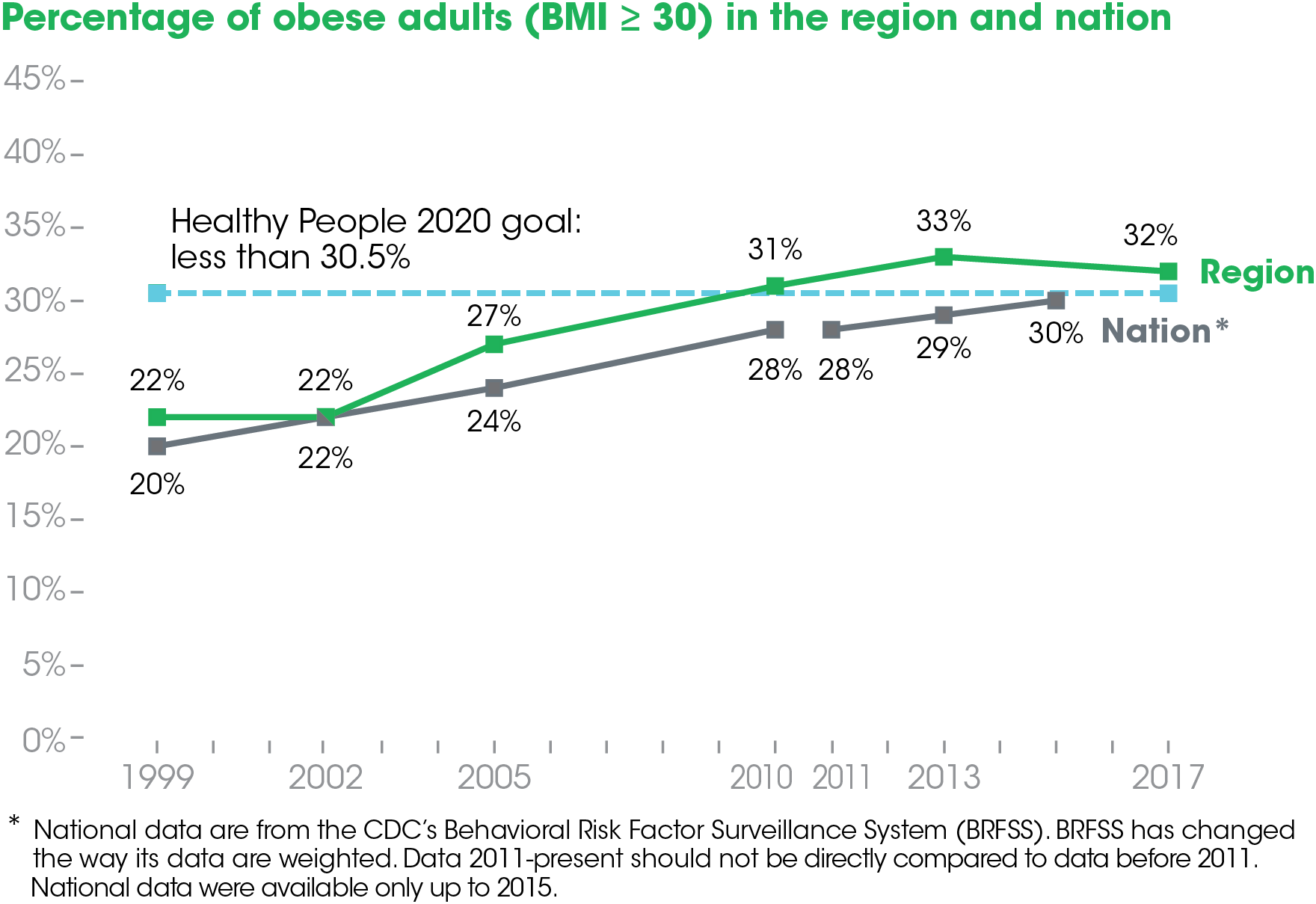The 2017 Community Health Status Survey (CHSS), funded by Interact for Health, has found that nearly 7 in 10 adults (68 percent) in Greater Cincinnati and Northern Kentucky are either overweight or obese. This is a slight increase from 2013 (65 percent).
Weight ranges for being overweight and obese are calculated using the Body Mass Index (BMI). BMI is calculated by dividing a person’s weight in pounds by height in inches squared, and then multiplying that result by 703. The CHSS asked for height and weight during the survey, and BMI was calculated for each respondent. Overweight is defined as a BMI of 25-29.9. Obesity is defined as a BMI of 30 or greater.

A subset of this group, the percentage of adults who are obese, remained stable between 2013 (33 percent) and 2017 (32 percent) after rising between 2002 and 2013. This is similar to the nation (30 percent). The Healthy People 2020 goal is an adult obesity rate of 30.5 percent or lower.
Adults in Northern Kentucky reported an obesity rate similar to the region as a whole (34 percent versus 32 percent). Adults in Bracken, Carroll, Gallatin, Owen and Pendleton counties reported an obesity rate similar to 2013, when it was 36 percent. Adults in Boone, Campbell, Grant and Kenton counties reported an obesity rate higher than 2013, when it was 27 percent.
According to the Centers for Disease Control and Prevention (CDC), obesity is associated with reduced quality of life, poorer mental health outcomes, diabetes, heart disease, stroke and some types of cancer. Obesity continues to be a major cause of preventable chronic disease and health care costs in the United States.
Obesity associated with poor health
“In our region, nearly 8 in 10 adults with fair or poor health are overweight or obese, while just less than 6 in 10 adults with excellent or very good health are overweight or obese,” says O’dell M. Owens, M.D., M.P.H., President/CEO of Interact for Health. “This illustrates the connection between weight and overall health.”
An adult with fair or poor health is more likely to be obese than overweight. Out of every 10 adults with fair or poor health in our region, five are obese and three are overweight. But among 10 adults with excellent or very good health, only two are obese and four are overweight.

Obesity varies by income, race, age
Some groups in the region are more likely than others to be obese. Adults earning less than 100% of the Federal Poverty Guidelines (FPG) are more likely to be obese (45 percent) than adults living between 100% and 200% FPG (35 percent) and above 200% FPG (29 percent).
Obesity also varies by race and age. Four in 10 African American adults are obese (40 percent), compared with 3 in 10 White adults (31 percent). Younger adults between the ages of 18 and 29 are less likely to be obese (25 percent) than adults older than 65 (31 percent). Adults between the ages of 30 and 64 are most likely to be obese (35 percent).
More information about Greater Cincinnati adults’ weight status and other topics, is available online.
The 2017 Community Health Status Survey (CHSS) was conducted by the Institute for Policy Research at the University of Cincinnati for Interact for Health. Interact for Health is an independent foundation that serves 20 counties in Ohio, Kentucky and Indiana. More information is available on its website.
















